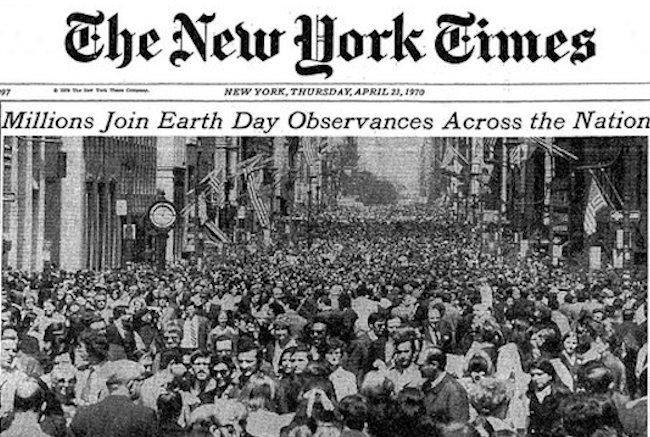Invest in Our Planet
The History of Earth day
April 21, 2022
Every year on April 22, Earth Day marks the anniversary of the birth of the modern environmental movement in 1970. Decades leading up to the first Earth Day, mainstream America remained largely oblivious to environmental concerns and how a polluted environment threatens human health. Then in 1962, Rachel Carson published New York Times bestseller Silent Spring. The book raised public awareness and concern for living organisms, the environment, and the links between pollution and public health.
On January 1969, many witnessed the devastation of a massive oil spill in Santa Barbara, California, including Senator Gaylord Nelson, the junior senator from Wisconsin. With the recent student anti-war movement, Nelson wanted to combine the energy of those protests with the newly found public consciousness about the air and water pollution. Nelson persuaded congressman Pete McCloskey and a young activist, Denis Hayes, to help him organize campus teach-ins. The group chose April 22, a weekday that fell between Spring Break and Final Exams, that way they could maximize student participation. Realizing the potential impact they could have on all Americans, Hayes built a national staff of 85 to promote events across the land and the effort soon broadened to include a wide range of organizations, faith groups, and others. Earth Day inspired 20 million Americans — at the time, 10% of the total population of the United States — to take to the streets, parks, and auditoriums to demonstrate against the impacts of 150 years of industrial development.
In 1990, environmental leaders approached Hayes about organizing another major campaign for the planet, but this time it went global. It mobilized 200 million people in 141 countries and lifted environmental issues onto the world stage. Earth Day gave a huge boost to recycling efforts worldwide and helped pave the way for the 1992 United Nations Earth Summit in Rio de Janeiro. It also led to President Bill Clinton to award Senator Nelson the Presidential Medal of Freedom for his role as Earth Day founder.
As the 90’s were coming to an end, Hayes agreed to spearhead another campaign, this time focused on global warming and a push for clean energy. By Earth Day 2000, 5,000 environmental groups within 184 countries were reaching out to hundreds of millions of people. 30 years later, Earth Day 2000 sent world leaders a loud and clear message: Citizens around the world wanted quick and decisive action on global warming and clean energy.
Today, Earth Day is widely recognized as the largest secular observance in the world, marked by more than a billion people every year as a day of action to change human behavior and create global, national and local policy changes. The social and cultural environments we saw in 1970 are rising up again today. Digital and social media are bringing these conversations, protests, strikes and mobilizations to a global audience, uniting a concerned citizenry as never before and catalyzing generations to join together to take on the greatest challenge that humankind has faced.
“The History of Earth Day.” Earth Day, 2 July 2021, https://www.earthday.org/history/.
